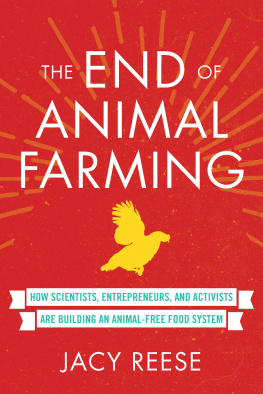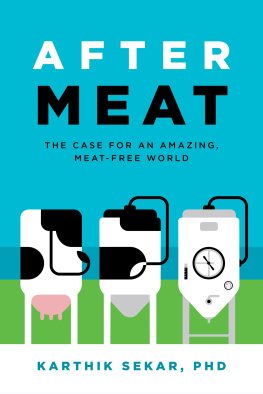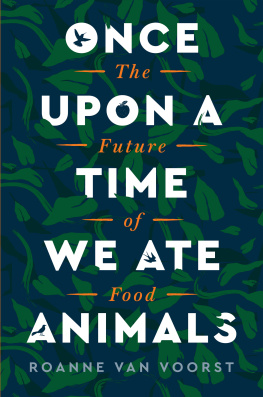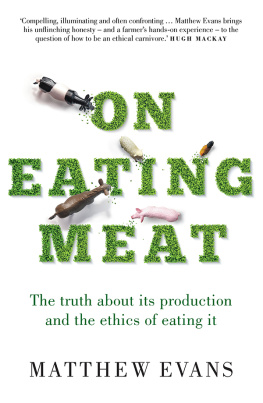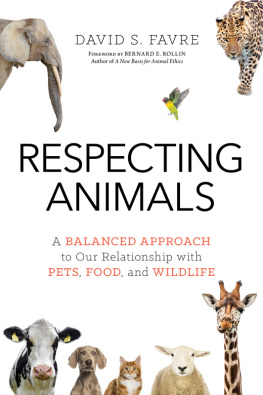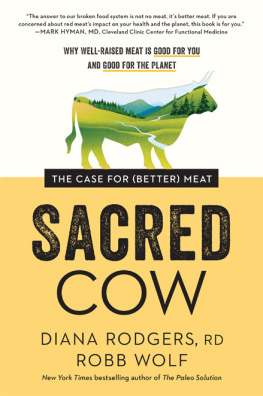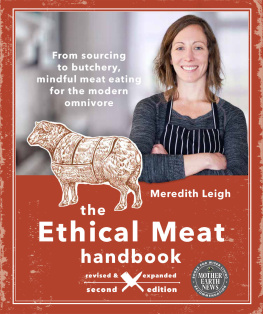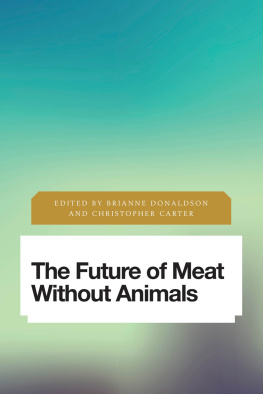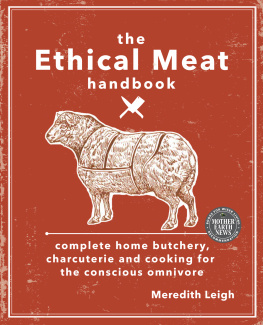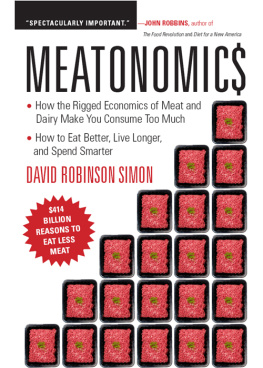Table of Contents
Pagebreaks of the print version
Guide
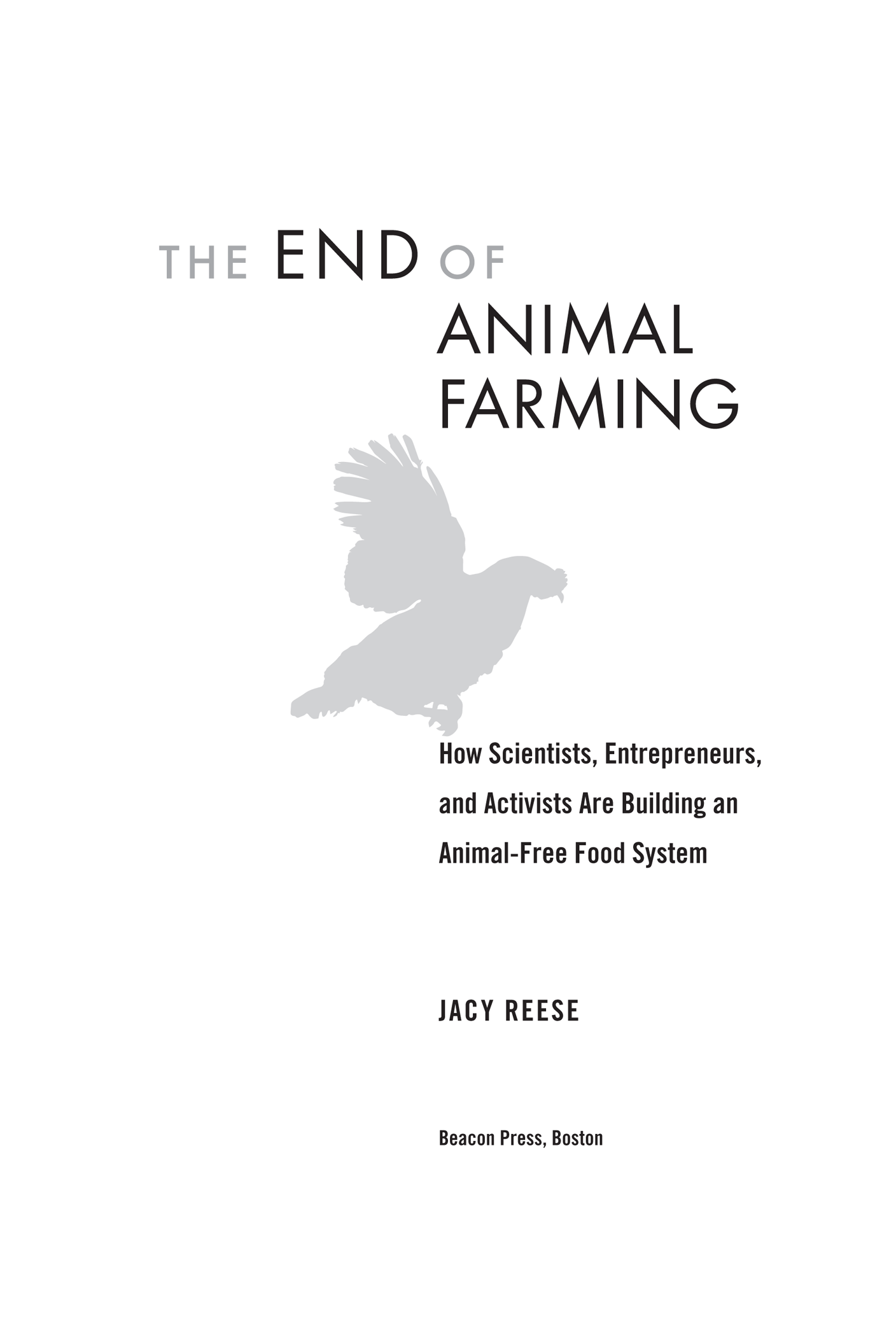
T his book is dedicated to ancient changemakers like Pythagoras (vegetarian and Greek philosopher) and Ashoka (animal advocate and Indian emperor), whose ripple effects plausibly did more good than anyone elses in the history of the world.
INTRODUCTION
This is not a book about the problems of animal farming. Scores of compelling books, documentaries, news articles, and scientific papers have detailed the damage animal farming does to public health, agricultural workers, rural communities, the national economy, the global food supply, our air and water, and, of course, farmed animals.
This is a book about exactly how we can solve those problems.
So much has been written exposing and condemning the animal agriculture industry that technology theorist Tom Chatfield listed eating meat and factory farming first in his predictions of what our descendants in centuries to come will deplore about todays society. Journalist Ezra Klein, author Steven Pinker, business magnate Richard Branson, science educator Bill Nye, and Indian politician Maneka Gandhi have all made similar forecasts, based primarily on concern for farmed animals. In 2017, the BBC even produced the mockumentary Carnage based in the vegan world of 2067. It took a critical and humorous look at Britains unpleasant history of eating animals.
It might seem surprising that the plight of these neglected creaturesby numbers, around 93 percent of farmed animals are chickens and fish
You might feel cautious about this opposition to all animal farming: If theres a small percentage of the animal agriculture industry thats not factory farming, shouldnt we support that segment instead of abolishing the whole thing? Whats wrong with buying eggs from happy hens? I will share my views on this topic at length in , arguing that we should oppose all animal farming, but note that most of this books arguments dont rely on that viewpoint. Food advocates of all viewpoints are still united against the vast majority of modern animal farming, and you could read the rest of this book as The End of Factory Farming with little issue.
The future is brighter than you think
Some people dismiss the notion that animal farming could ever end, arguing that meat, eggs, and dairy are too deeply embedded in human society and human nature. To the contrary, humanity has already seen many similar transitions. With animals, we shifted from whale oil to petroleum to light our homes. We shifted from horse-drawn carriages to automobiles as the dominant mode of local transportation. Were currently seeing a major transition in circuses from animal-based to human-based entertainment. Outside of animal issues, weve seen dramatic changes in our relationships with other humans, many of whom have been treated with blatant insensitivity similar to what animals currently endure. The inhumane practices of child labor have been largely abolished. Women, people of color, the mentally disabled, and many other oppressed groups have seen radical shifts from being viewed as mere property or lesser citizens to being appreciated as individuals with their own rights, desires, and intereststhough of course society still has a long way to go.
In the specific domain of animal farming and vegetarianism, weve already seen a remarkable transition that suggests that species differences, like racial and gender divisions between humans, are not unbreakable barriers to moral consideration. Whats more, our dietary habits are not set in stone or hardwired into humanity: they are more determined by cultural mores. In the West, vegetarianism was for centuries seen as a strange, puritanical lifestyle. In the 1800s, Sylvester Graham and John Harvey Kellogga minister and doctor now best known for their crackers and breakfast cereal, respectivelyadvocated a bland vegetarian diet to improve health and reduce sexual desire and immoral tendencies. (Other recommendations included vibration therapy, complete abstinence from alcohol and tobacco, and frequent enemas.) While this made vegetarianism popular with the most ascetic and health-crazed segment of the population, it locked vegetarianism into the US public consciousness as a fringe diet for the self-righteous and holier than thou.
Modern vegetarian and vegan diets retain remnants of this stereotype, but they are taken far more seriously today because they are adopted not for personal purity but for the sake of animals, the environment, and human welfare. When a startup called Memphis Meats released the worlds first cultured meatball in 2016real meat made with animal cells grown in cell culture (details in
Animal-free foods are increasingly associated with exciting new technology, Silicon Valley, and intellectual trendsetters. Consider the role of a single company, Google. Googles cofounder, Sergey Brin, funded the creation of the worlds first cell-cultured hamburger in 2013.
The ace in the hole for the inevitability of the end of animal farming is the incredible inefficiency of making meat, dairy, and eggs from animals. Farmed animals consume calories and nutrients from plants, and they use that energy to do a lot more than produce meat, dairy, and eggs.
Culinary professionals and food scientists are increasingly cutting this waste by taking the constituents of animal products (fats, proteins, nutrients, water) directly from plants and assembling them into the architecture of meat. They can also make cultured meat like the Memphis Meats meatball, real animal flesh made by using cell cultures to grow meat in the same process that happens inside an animals body, so its molecularly identical to conventional meat. The efficiency of both these processes suggests that, in the long run, humanity will use its technological prowess to make meat, dairy, and eggs directly without the wasteful process of raising and killing animals, regardless of ethics. To put it another way, a big reason were going to see the end of animal farming is that it doesnt have to mean the end of meat.
Effective altruism
My personal perspective in writing this book begins with growing up in rural Texas. The first time I saw a goat give birth is imprinted in my memory. It was a bloody ordeal, and all the neighbors circled around. They gathered to ensure that the mother was safe, to ensure the kid was healthy, and frankly because there just wasnt that much else to get excited about in the woods of rural East Texas. In middle school, I made a goat exerciser for the science fair. My classmate and I assembled PVC pipes into a merry-go-round and leashed a goat to each side so they could walk in circles together. At other times in my childhood, I helped raise chickens and rabbits, competed in the county fair, and grew my own patch of watermelons and okra in a forest clearing behind the house my dad built himself in true Texas fashion.
Like many American kids, I was also raised with coloring books that showed happy, healthy farmed cows, pigs, and chickens on green grass under a blue sky. I believed that animal agriculture was a decentralized industry composed of thousands of Old MacDonald farms dotting the landscapes of rural America. Every day on my way to school, I passed by dozens of cows lounging on lush pastures chewing grass and cud. To me, meat was an embodiment of the natural, pristine connection between animals and humans who lived off the land.

